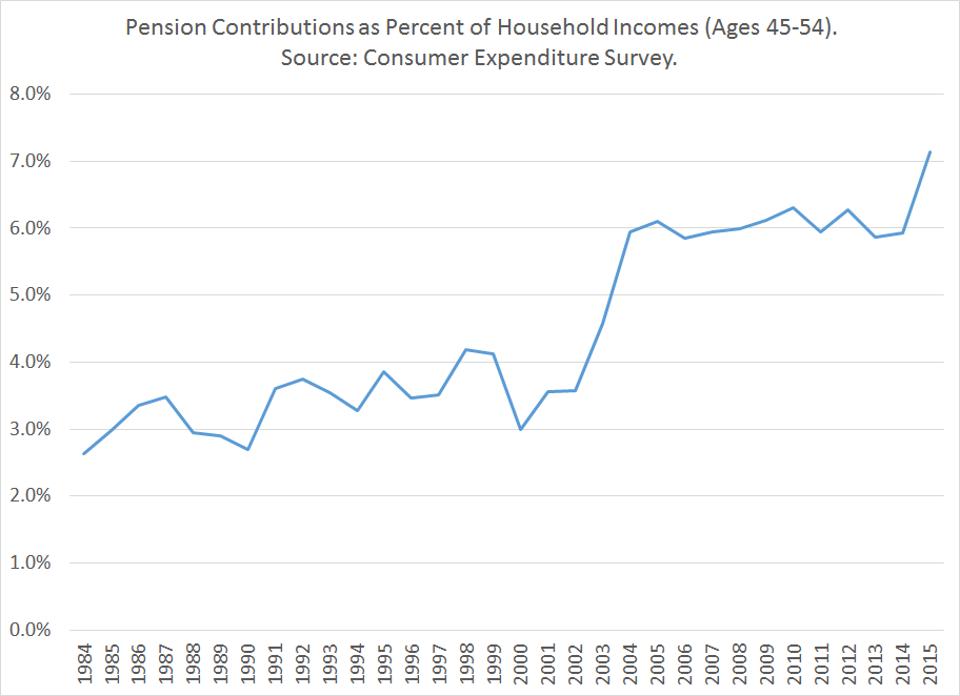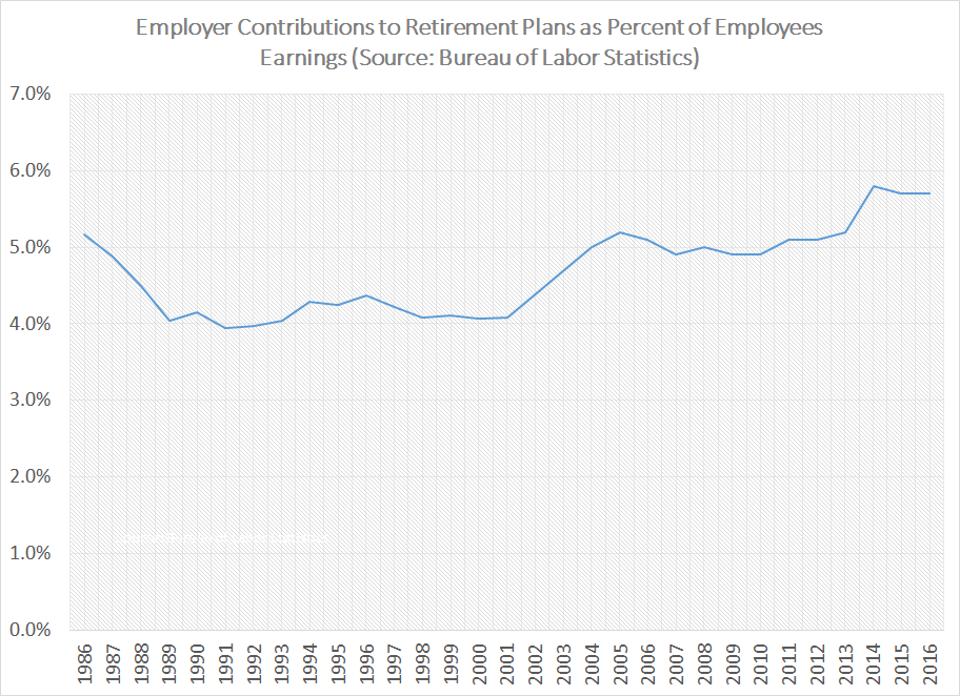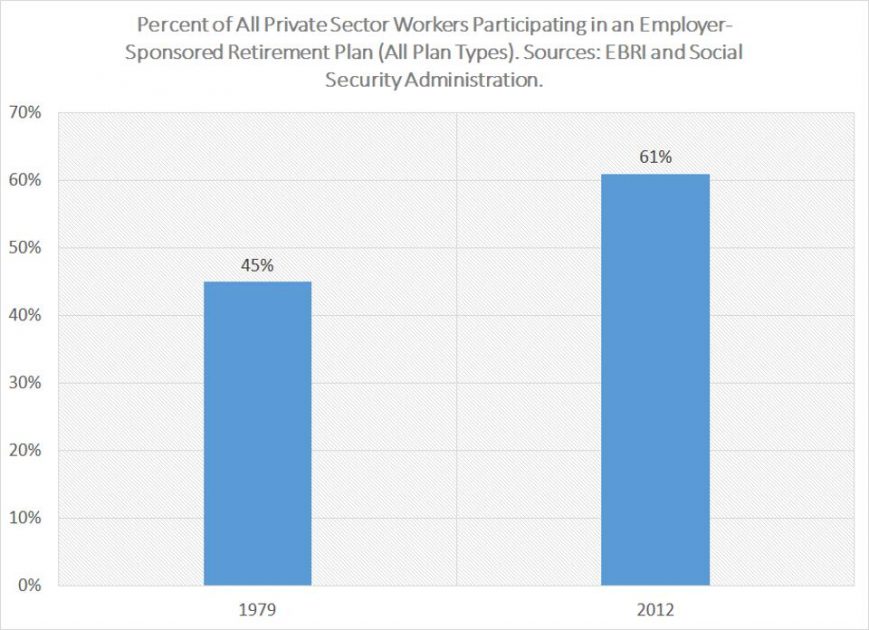The Congressional Budget Office, the federal government’s numbers cruncher, recently completed an analysis comparing salaries and benefits received by employees of federal and large private-sector employers, and concluded that all things being equal, the federal government pays better wages than the private sector.
On average, the federal government’s compensation package pays a 17 percent premium over the private sector.
The analysis, called “highly professional” and “state-of-the art” by former Social Security Administration Deputy Commissioner Andrew Biggs, is an attempt to do an apples-to-apples comparison by taking into account levels of education and experience.
All-in compensation per full-time equivalent federal employee in 2015 was about $123,000. Assuming a 17 percent federal pay premium, this implies that on average a similar private-sector employee would receive total pay and benefits of about $105,000, an annual difference of about $18,000. …
When averaged over 2.1 million federal employees, the federal compensation premium adds up to real money. Total federal compensation last year was close to $260 billion. A 17 percent difference is about $38 billion per year, equal to what the federal government spends on energy and the environment and substantially exceeding federal spending on transportation.
The CBO report found that 91 percent of federal employees have an education ranging from high school graduate to master’s degree, and that these employees make more than those of equivalent educations at similar jobs in the private sector. The report found, however, that the 9 percent of the federal workforce that have doctoral level degrees make 18 percent less than those with equivalent degrees in the private sector.
Biggs says that the difference in the type of grades, alma maters, and fields of study have not been measured so there’s no way to know whether federal workers are more “middle of the road” students from average colleges compared to those Ivy Leaguers with top grades. He suggests that this lack of information may be where the weakness in the report lies and it could be a notable variable since “most private-sector employers could not attract and retain employees while paying 18 percent less than their competitors.”
Doubling back, however, Biggs then says that the federal pay premium could be hurting innovation because workers who choose to make more money in government than work in the private sector are squandering their potential creative energies.
As the CBO report shows, for less-educated workers federal pay is more than 50 percent higher than private-sector levels. This makes it almost impossible for an employer of less-educated workers to compete and, as a result, the best of that group — employees with the greatest drive, imagination, and leadership — may find themselves employed in government rather than the private sector, where they might make a larger impact on their communities. …
There are many highly-educated, highly skilled, highly-motivated Americans working for the federal government doing important jobs. But we shouldn’t miss the risk that generous federal pay could mean the founders of the next Google or Tesla find themselves working in a federal office building instead of creating the innovations that can change the world.
But perhaps the well-paid average government worker of a decent education isn’t missing his calling. A recently released study that tracked 81 high school valedictorians through their careers found that the best and the brightest often end up in great jobs but ones that lack creativity. The suggestion is that the early track toward professional success pushes these highly motivated students to avoid risk-taking. They do not pursue eminence in one particular field nor devote themselves to a single passion.
“They obey rules, work hard, and like learning, but they’re not the mold breakers. … They work best within the system and aren’t likely to change it.”
In other words, dropouts like Bill Gates, Steve Jobs, and Mark Zuckerberg are unlikely to be interested in government careers in the first place.
Ultimately, the federal government’s high pay does have side effects. It skews the pay scale and impacts the labor market, making it harder for companies to compete for bright employees. However, if the goal is to populate the federal government with good-quality workers, financial benefits are a solid offer to attract them.








